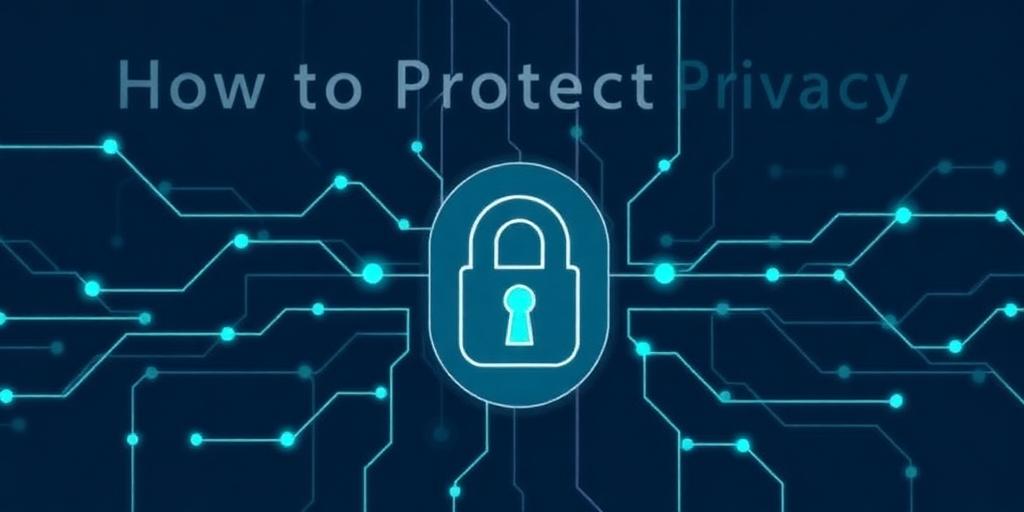How to Protect Your Privacy Online: A Comprehensive Guide
In an increasingly interconnected digital world, safeguarding your online privacy is no longer a mere suggestion—it is a critical imperative. Our daily interactions, from browsing social media to online shopping, generate a vast digital footprint that can be exploited if not properly managed. This guide offers an authoritative perspective on essential strategies and best practices for robust online privacy protection, empowering you to reclaim control over your personal data.
Understanding Your Digital Footprint and Its Implications
Every click, search, and interaction online contributes to your digital footprint. This data is collected by websites, advertisers, and various entities, often without explicit consent or full user awareness. Understanding how your data is collected and utilized is the first step in effective digital footprint management. This includes everything from your browsing history and purchase patterns to your location data and social media activity. The implications can range from targeted advertising to more serious concerns like identity theft or unauthorized data sharing.
Essential Tools and Strategies for Enhanced Online Privacy
Protecting your online privacy requires a multi-faceted approach, combining strategic tools with diligent personal habits. Implementing these measures significantly enhances your security posture and limits unwanted data exposure.
1. Leverage Virtual Private Networks (VPNs)
A Virtual Private Network (VPN) encrypts your internet connection, masking your IP address and routing your traffic through a secure server. This creates a private tunnel, making it exceedingly difficult for third parties to monitor your online activities or pinpoint your physical location. For individuals serious about secure internet browsing strategies, a reputable VPN is an indispensable tool, especially when using public Wi-Fi networks.
2. Prioritize Privacy-Focused Browsers and Search Engines
Mainstream browsers and search engines often track your online behavior to build user profiles for advertising. Transitioning to privacy-focused alternatives like Brave or Firefox (with enhanced tracking protection) and search engines such as DuckDuckGo or Startpage can significantly reduce this passive data collection. These tools are designed to block trackers and prevent the creation of comprehensive user profiles, contributing to better online privacy tips.
3. Implement Strong Password Management and Two-Factor Authentication (2FA)
Weak or reused passwords are a primary vulnerability. Employing a robust password manager generates and securely stores unique, complex passwords for all your accounts. Furthermore, enabling Two-Factor Authentication (2FA) wherever possible adds an additional layer of security, requiring a second verification step beyond just your password. This dramatically reduces the risk of unauthorized access even if your password is compromised.
4. Review and Adjust Privacy Settings Across Platforms
Social media platforms, email services, and various online applications often have default privacy settings that are not optimized for maximum user privacy. Regularly review and adjust these settings to limit who can see your information, tag you in content, or access your data. Understand what data is being shared and with whom, ensuring you maintain control over your personal narrative and shared content.
5. Be Wary of Public Wi-Fi and Phishing Attempts
Public Wi-Fi networks are notoriously insecure, making your data vulnerable to interception. Avoid sensitive transactions (e.g., banking, online shopping) on public networks, or always use a VPN if absolutely necessary. Additionally, remain vigilant against phishing attempts—deceptive emails or messages designed to trick you into revealing personal information. Always verify the sender and the legitimacy of links before clicking, as this is a common vector for data breaches and identity theft, underscoring the importance of strengthening online security.
6. Keep Software and Operating Systems Updated
Software developers frequently release updates that include critical security patches. Neglecting to update your operating system, web browser, and other applications leaves known vulnerabilities unaddressed, making your devices susceptible to exploits. Consistent updates are fundamental to maintaining secure systems and protecting your privacy.
Conclusion: An Ongoing Commitment to Digital Self-Defense
Protecting your privacy online is not a one-time task but an ongoing commitment. By adopting these data privacy best practices and continually educating yourself on emerging threats, you can significantly mitigate risks and exercise greater control over your digital life. Vigilance, combined with the strategic application of privacy tools and practices, forms the bedrock of a secure and private online experience.




